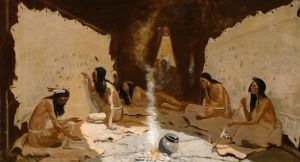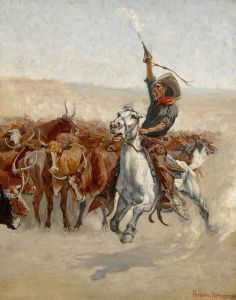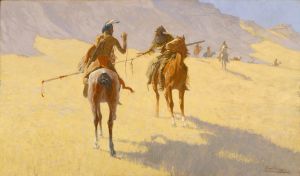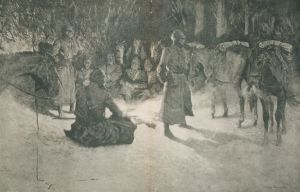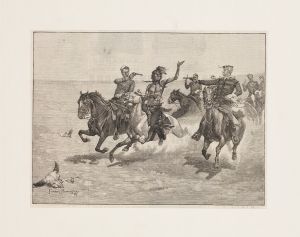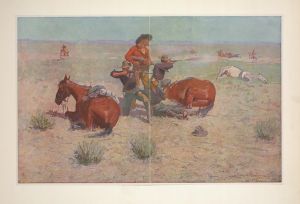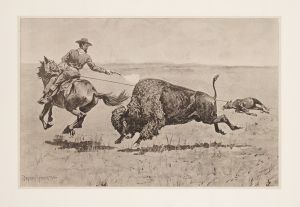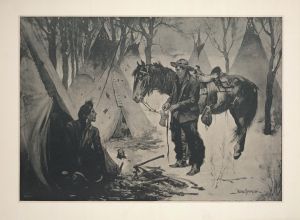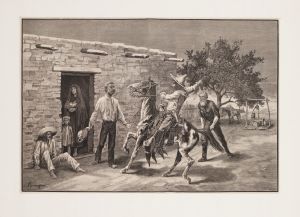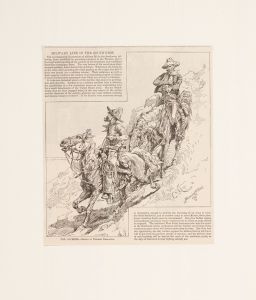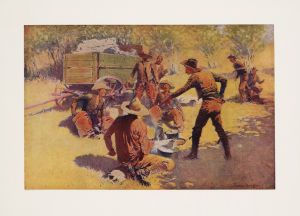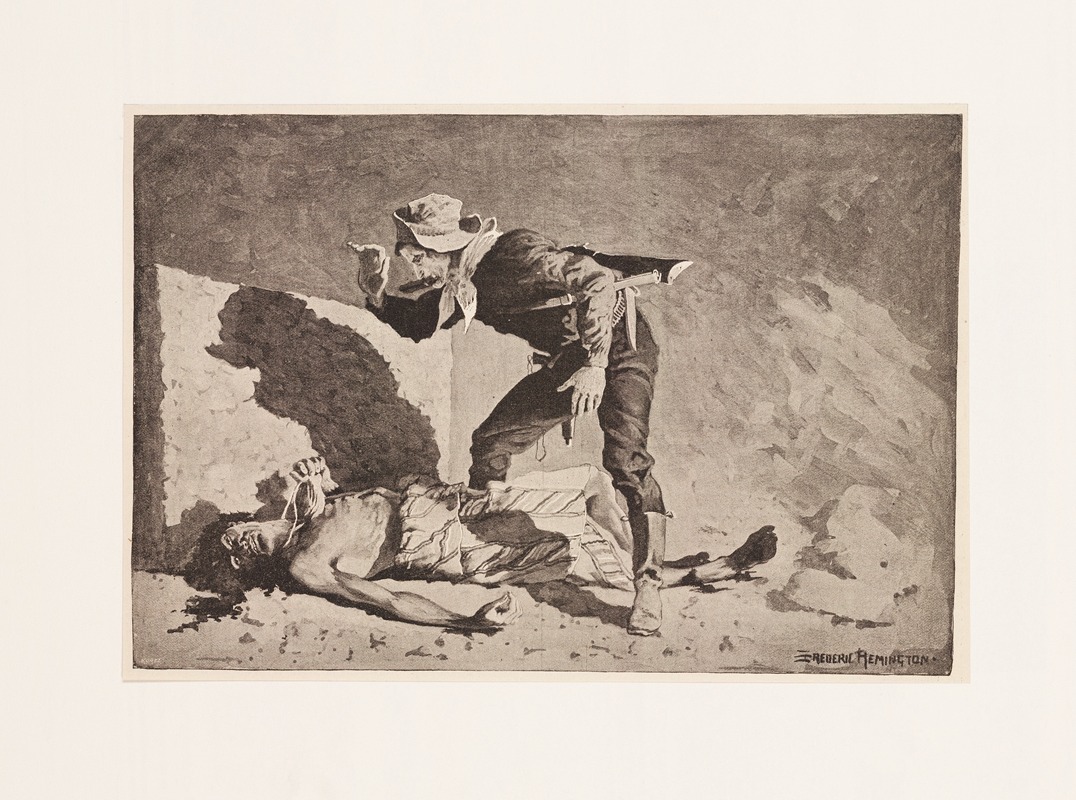
The dying Cacique
A hand-painted replica of Frederic Remington’s masterpiece The dying Cacique, meticulously crafted by professional artists to capture the true essence of the original. Each piece is created with museum-quality canvas and rare mineral pigments, carefully painted by experienced artists with delicate brushstrokes and rich, layered colors to perfectly recreate the texture of the original artwork. Unlike machine-printed reproductions, this hand-painted version brings the painting to life, infused with the artist’s emotions and skill in every stroke. Whether for personal collection or home decoration, it instantly elevates the artistic atmosphere of any space.
Frederic Remington was an American painter, illustrator, sculptor, and writer known for his depictions of the American Old West. His works often featured cowboys, Native Americans, and the U.S. Cavalry, capturing the spirit and challenges of life on the frontier. One of his lesser-known paintings is "The Dying Cacique," which reflects his interest in Native American themes.
"The Dying Cacique" was created during a period when Remington was deeply engaged in portraying Native American subjects. The term "cacique" refers to a leader or chief among indigenous peoples in Latin America and the Caribbean, but it is sometimes used more broadly to denote a Native American leader. The painting depicts a poignant scene, focusing on the final moments of a Native American leader's life. Remington's attention to detail and his ability to convey emotion through his art are evident in this work.
In "The Dying Cacique," Remington employs his characteristic style, which combines realism with a dramatic flair. The composition likely includes elements typical of Remington's work, such as a focus on the human figure, detailed depictions of clothing and accessories, and a naturalistic setting that enhances the narrative. His use of color and light often adds a dramatic effect, emphasizing the emotional weight of the scene.
Remington's interest in Native American culture and his efforts to portray it in his art were part of a broader trend during the late 19th and early 20th centuries. This period saw a growing fascination with the American West and its indigenous peoples, partly fueled by the closing of the frontier and the rapid changes affecting Native American communities. While Remington's works are celebrated for their artistic merit, they also reflect the complex and often problematic attitudes of his time, including romanticized and sometimes stereotypical portrayals of Native Americans.
"The Dying Cacique" is an example of Remington's ability to capture the human experience and the cultural dynamics of the American West. His works remain significant for their artistic contributions and as historical documents that offer insights into the perceptions and representations of Native Americans during his era.
While "The Dying Cacique" may not be as widely recognized as some of Remington's other works, it contributes to the understanding of his artistic legacy and his role in shaping the visual narrative of the American West. Remington's paintings, including this one, continue to be studied and appreciated for their technical skill and their depiction of a pivotal period in American history.





